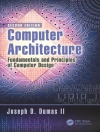This book is devoted to recent progress made in solving propositional satisfiability and related problems. Propositional satisfiability is a powerful and general formalism used to solve a wide range of important problems including hardware and software verification. The core of many reasoning problems in automated deduction are propositional. Research into methods to automate such reasoning has therefore a long history in artificial intelligence. In 1957, Allen Newell and Herb Simon introduced the Logic Theory Machine to prove propositional theorems from Whitehead and Russel’s ‘Principia mathematica’.
In 1960, Martin Davis and Hillary Putnam introduced their eponymous decision procedure for satisfiability reasoning (though, for space reasons, it was quickly superseded by the modified procedure proposed by Martin Davis, George Logemann and Donald Loveland two years later). In 1971, Stephen Cook’s proof that propositional satisfiability is NP-Complete placed satisfiability as the cornerstone of complexity theory.
Table of Content
Satisfiability in the Year 2005.- Heuristic-Based Backtracking Relaxation for Propositional Satisfiability.- Symbolic Techniques in Satisfiability Solving.- Exponential Lower Bounds for the Running Time of DPLL Algorithms on Satisfiable Formulas.- Backdoor Sets for DLL Subsolvers.- The Complexity of Pure Literal Elimination.- Clause Weighting Local Search for SAT.- Solving Non-Boolean Satisfiability Problems with Stochastic Local Search: A Comparison of Encodings.- Regular Random k-SAT: Properties of Balanced Formulas.- Applying SAT Solving in Classification of Finite Algebras.- The SAT-based Approach to Separation Logic.- Math SAT: Tight Integration of SAT and Mathematical Decision Procedures.












